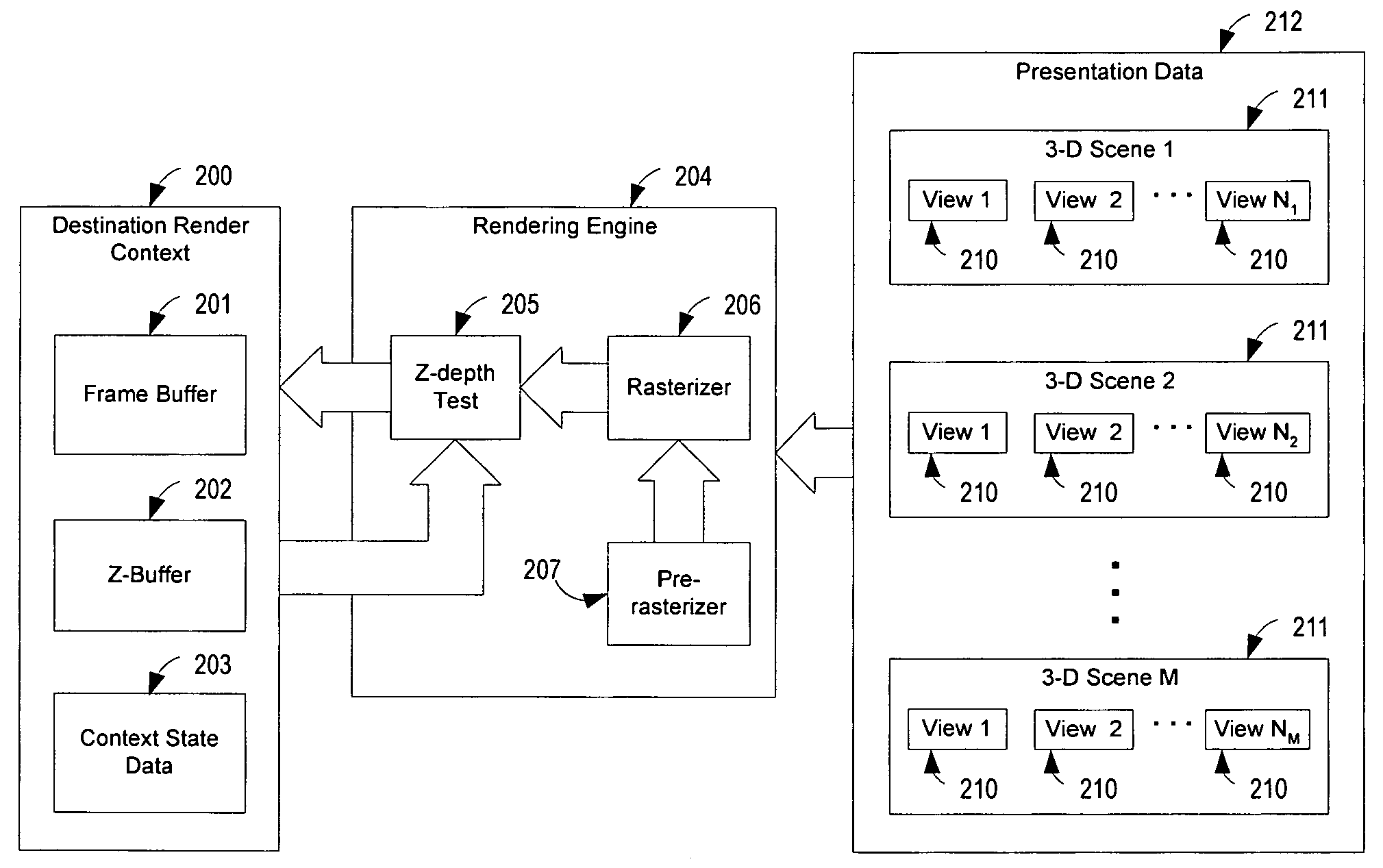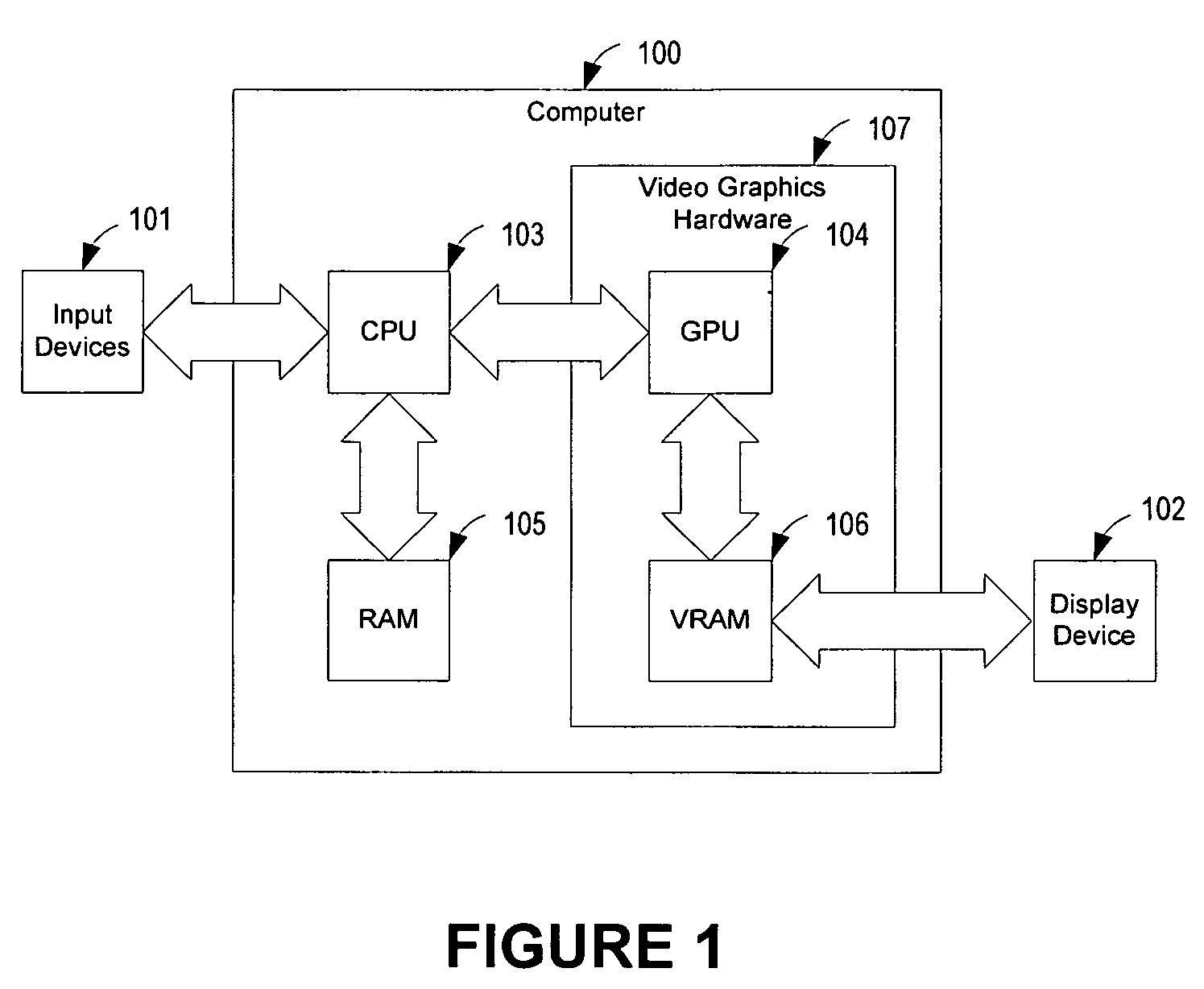Methods and systems for real-time, interactive image composition
a technology of interactive image and composition, applied in the field of real-time interactive multimedia, can solve the problems of insufficient composite image creation, inability inability to allow users to change the course of events, etc., and achieve the effect of enhancing the image rendering process and increasing video memory resources
- Summary
- Abstract
- Description
- Claims
- Application Information
AI Technical Summary
Benefits of technology
Problems solved by technology
Method used
Image
Examples
Embodiment Construction
[0051]While the invention is susceptible to various modifications and alternative forms, a specific embodiment thereof has been shown by way of example in the drawings and will herein be described in detail. It should be understood, however, that it is not intended to limit the invention to the particular form disclosed, but on the contrary, the invention is to cover all modifications, equivalents, and alternatives falling within the spirit and scope of the invention as defined by the appended claims.
[0052]FIG. 12 is a block diagram of a typical real-time 3-D interactive multimedia rendering process as presently known in the art. Element 1200 illustrates a single 3-D scene view operable within a 3-D scene, that produces element 1201, an image or frame that is rendered in real time and displayed successively to the user. It is important to note that the resulting imagery 1201 may contain blending between 3-D objects that are described within the 3-D scene.
[0053]Although not illustrat...
PUM
 Login to View More
Login to View More Abstract
Description
Claims
Application Information
 Login to View More
Login to View More - R&D
- Intellectual Property
- Life Sciences
- Materials
- Tech Scout
- Unparalleled Data Quality
- Higher Quality Content
- 60% Fewer Hallucinations
Browse by: Latest US Patents, China's latest patents, Technical Efficacy Thesaurus, Application Domain, Technology Topic, Popular Technical Reports.
© 2025 PatSnap. All rights reserved.Legal|Privacy policy|Modern Slavery Act Transparency Statement|Sitemap|About US| Contact US: help@patsnap.com



